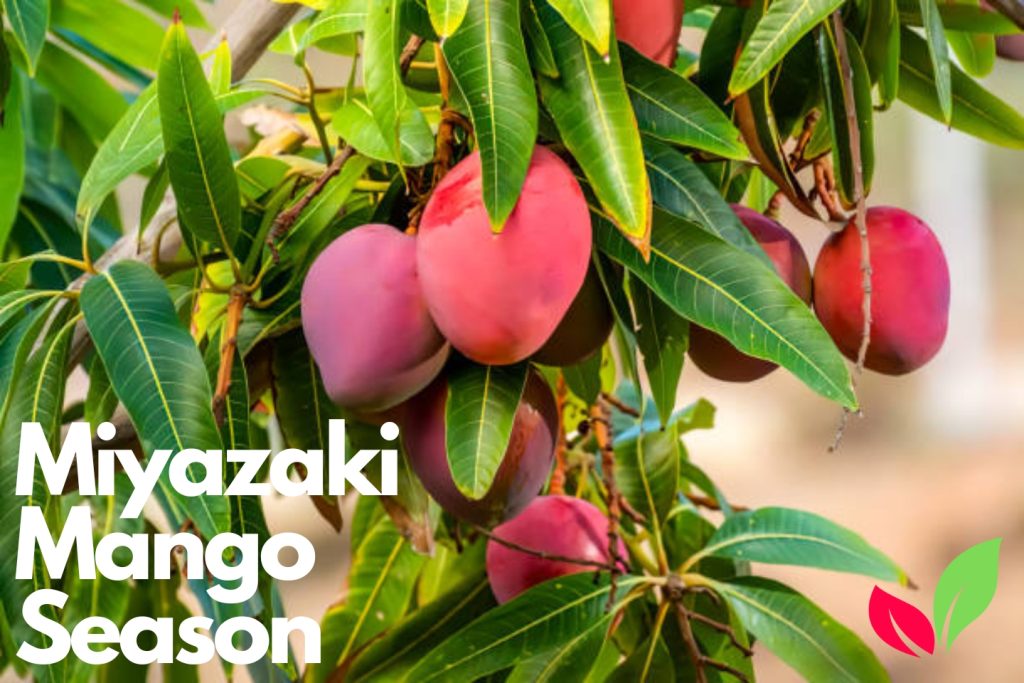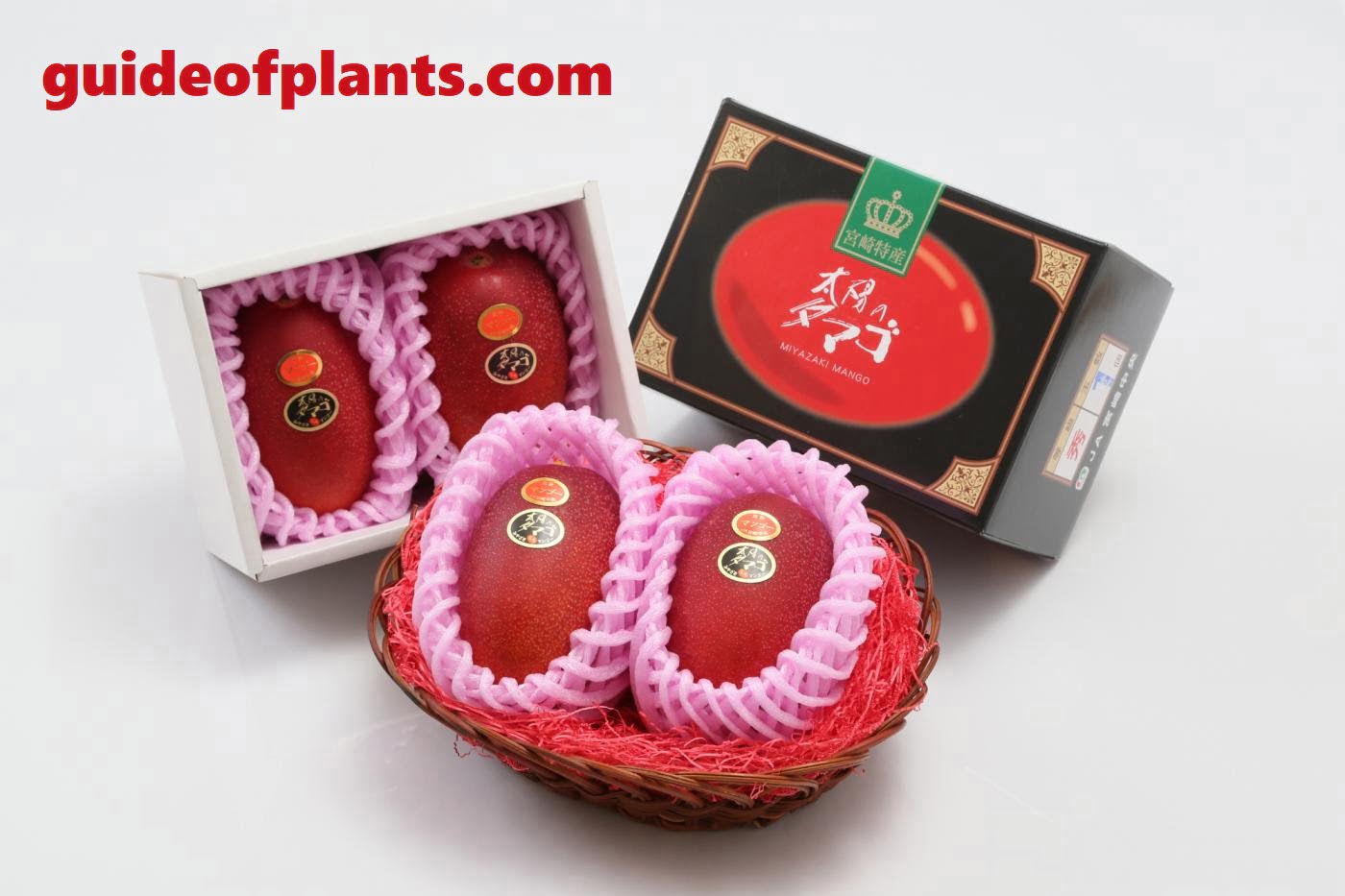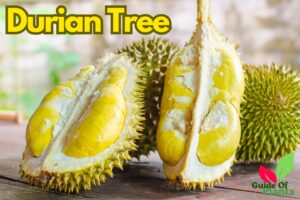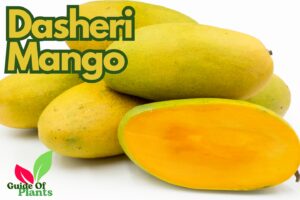The Miyazaki Mango Plant is a type of mango that grows in the prefecture of Miyazaki in Japan. It’s known for having sweet, juicy meat and a unique taste. The Miyazaki Mango Plant is very valuable in Japan, where it is considered a luxury fruit because it is hard to get and costs a lot. The plant has become a symbol of farming in the Miyazaki prefecture, and it brings in a lot of money for local farmers. It is also an important part of Japanese culture and is often used in traditional Japanese food and ceremonies. Overall, the Miyazaki Mango Plant is an important part of Japan’s agricultural industry and cultural history.
Table of Contents
The goal of this blog post is to give readers a comprehensive understanding of the Miyazaki Mango Plant, including its history, characteristics, cultivation, and cultural significance. The purpose of this post is to highlight the significance of this unique fruit in Japan’s agricultural industry, its role in Japanese cuisine and culture, and the industry’s challenges and opportunities. The post also aims to educate readers on the health benefits and nutritional value of the Miyazaki Mango Plant, as well as to inspire them to value locally grown, high-quality produce. Overall, the blog post aims to give readers a thorough understanding of the Miyazaki Mango Plant, its significance, and its impact on Japan’s agricultural sector and cultural heritage.
Know About: Fruit Plant Gardening
History of mango cultivation in Japan
Mangos have been grown in Japan since the Edo period (1603-1868), when the fruit was brought there for the first time. Mango farming, on the other hand, didn’t start in earnest until the late 1800s. In Miyazaki prefecture, the first mango tree was planted in 1901. Over the years, local farmers tried out different varieties and ways to grow them.
In the 1980s, a group of researchers from Miyazaki University and local farmers came up with the idea for the Miyazaki Mango Plant. Researchers used both old-fashioned breeding techniques and new technology to create a mango that would grow well in the climate and soil of the area. The result was a type of mango that was not only tasty but also kept for longer and was less likely to get sick or be eaten by pests.
Since it was created, the Miyazaki Mango Plant has become a very popular fruit in Japan. It has also helped put Miyazaki prefecture on the map as a major producer of high-quality mangoes. The Miyazaki Mango Plant is now thought of as one of the most popular and well-known types of mango in Japan.

How the Miyazaki Mango Plant was developed and its unique characteristics
The Miyazaki Mango Plant was made by using both old-fashioned breeding techniques and new technology. Researchers from Miyazaki University and local farmers worked together to crossbreed different kinds of mango, looking for traits that would work well in the local climate and soil.
The sweet, juicy flesh and unique taste of the Miyazaki Mango Plant are two things that make it stand out. The fruit is known for its strong smell and complex taste, which has both sweet and sour notes. The skin of the Miyazaki Mango Plant is deep yellow or orange-red, and it is bigger and rounder than other mango plants.
The nutritional value of the Miyazaki Mango Plant is another thing that makes it stand out. The fruit has a lot of vitamins A and C and antioxidants, which help keep the body healthy and protect it from getting sick.
This Mango Plant is known for its long shelf life and excellent resistance to disease and pests. Farmers like it because they can grow high-quality fruit that can be moved and sold over long distances.
The Miyazaki Mango Plant is a one-of-a-kind fruit that is highly valued and has a lot of great qualities. Its development is a big step forward in agricultural research, and it has helped make Miyazaki prefecture one of the best places in Japan to grow high-quality mangoes.
Significance of the Miyazaki Mango Plant in Japan’s agricultural industry
This Mango Plant is a very important part of Japan’s farming industry for a number of reasons. The Miyazaki Mango Plant is a major way for farmers in the Miyazaki prefecture to make money. The fruit is very popular and can sell for a lot of money, which makes it a good crop for farmers. The Miyazaki Mango Plant has a lot of potential to be exported because it is very valuable in places like Taiwan, Hong Kong, and Singapore. This is a great chance for Japanese farmers to grow their business and make more money.
The Miyazaki Mango Plant is a big step forward in terms of agricultural research and new ideas. Farmers have been able to create a mango variety that does well in the local climate and soil by using advanced breeding techniques and technology. This variety has a number of desirable traits.
The Miyazaki Mango Plant is also important in terms of culture. It is a symbol of the agricultural history of the Miyazaki prefecture and is a big part of local food and culture. Miyazaki Mango Plant is a very important fruit for the Japanese farming industry. It is a valuable crop for farmers because of its unique qualities, economic potential, and cultural value. It is also an important part of Japan’s agricultural history.

Characteristics
Characteristics of the Miyazaki Mango Plant:
- Appearance: The Miyazaki Mango Plant is larger and rounder than other mango varieties, with a deep yellow or orange-red skin. The skin is smooth and thin, and the flesh is juicy and vibrant in color.
- Texture: The texture of the Miyazaki Mango Plant is soft and smooth, with a creamy consistency that melts in the mouth.
- Flavor: The Miyazaki Mango Plant has a rich aroma and complex taste, which is a balance of sweetness and acidity. The fruit is known for its unique flavor, which is different from other mango varieties.
- Nutritional Value: The Miyazaki Mango Plant is high in vitamins A and C, as well as antioxidants, which help to protect the body against disease and promote overall health. It also contains dietary fiber, potassium, and magnesium.
- Health Benefits: The Miyazaki Mango Plant is known to have a range of health benefits, including improving digestion, boosting the immune system, and promoting healthy skin and hair. It also has anti-inflammatory properties, which can help to reduce the risk of chronic diseases such as heart disease and cancer.
- Comparison to Other Mango Varieties: Compared to other mango varieties, the Miyazaki Mango Plant is larger in size, has a longer shelf life, and is more resistant to disease and pests. It is also known for its unique flavor and rich aroma, which sets it apart from other types of mangoes.
Overall this fruit plant is a unique and highly prized fruit with a range of desirable characteristics. Its appearance, texture, and flavor make it a popular choice for consumers, while its nutritional value and health benefits make it a valuable crop for farmers.
Growing requirements and conditions
The Miyazaki Mango Plant has specific growing requirements and conditions that are necessary for it to thrive. These include:
- Climate: The Miyazaki Mango Plant requires a warm and humid climate, with temperatures ranging between 25-30°C (77-86°F) during the day and 15-20°C (59-68°F) at night. The plant also needs a lot of sunshine and rainfall, with an average annual precipitation of around 1,500 mm (59 inches).
- Soil: The Miyazaki Mango Plant grows best in well-draining soils that are rich in organic matter. The soil should be slightly acidic, with a pH range of 5.5 to 6.5.
- Water: The Miyazaki Mango Plant requires regular watering, especially during the flowering and fruiting stages. The plant needs to be watered deeply and frequently, but care must be taken not to overwater, as this can lead to root rot.
- Fertilizer: The Miyazaki Mango Plant requires regular fertilization to maintain healthy growth and fruit production. A balanced fertilizer with a 2:1:1 ratio of nitrogen, phosphorus, and potassium is recommended.
- Pruning: The Miyazaki Mango Plant requires regular pruning to maintain its shape and promote healthy growth. Pruning should be done during the dormant season to remove dead or diseased branches and improve air circulation within the canopy.
- Pest and disease management: The Miyazaki Mango Plant is susceptible to a range of pests and diseases, including mango malformation disease and fruit fly infestations. Regular monitoring and pest management strategies, such as the use of insecticides and fungicides, are necessary to prevent crop losses.
Miyazaki Mango Plant requires specific growing conditions and management practices to produce high-quality fruit. Farmers must carefully monitor and manage their crops to ensure optimal growth and fruit production.
Harvesting and processing methods
Harvesting and processing methods for the Miyazaki Mango Plant are crucial to ensure the fruit is of high quality and has a long shelf life. Here are the typical harvesting and processing methods for the Miyazaki Mango Plant:
- Harvesting: The Miyazaki Mango Plant is usually harvested when the fruit is fully ripe but still firm to the touch. The fruit is picked by hand, using pruning shears to avoid damaging the fruit or the tree. Harvesting typically occurs between June and August, depending on the climate and growing conditions.
- Sorting and Grading: After harvesting, the fruit is sorted and graded based on size, color, and ripeness. The fruit is then carefully packed into crates or containers for transport.
- Washing and Disinfection: The fruit is then washed and disinfected to remove any dirt, debris, or pests. This is usually done using a combination of water and chlorine or other disinfectants.
- Pre-cooling: The fruit is then pre-cooled to reduce the internal temperature of the fruit and slow down the ripening process. This is typically done using refrigeration or hydro-cooling.
- Packaging: The fruit is then packaged into boxes or containers for transport to markets or processing facilities. The packaging must be durable and well-ventilated to prevent damage or spoilage during transport.
- Processing: The Miyazaki Mango Plant is also used to produce a variety of processed products, such as juice, jam, and dried fruit. Processing typically involves washing, peeling, and cutting the fruit, then processing it using various techniques such as drying, pasteurization, or fermentation.
Harvesting and processing methods for the Miyazaki Mango Plant are designed to preserve the fruit’s quality, flavor, and nutritional value while ensuring it has a long shelf life and is safe for consumption.

Sales and distribution channels
The Miyazaki Mango Plant is primarily grown in the Miyazaki Prefecture of Japan, but its popularity has spread to other regions and countries. Here are the typical sales and distribution channels for Miyazaki mangoes:
- Direct sales: Some farmers in Miyazaki Prefecture sell their Miyazaki mangoes directly to consumers through farmers’ markets, roadside stands, or online marketplaces. This allows consumers to purchase fresh, high-quality mangoes directly from the growers.
- Wholesale markets: Many Miyazaki mangoes are sold to wholesale markets, where they are auctioned off to distributors, wholesalers, and retailers. The largest wholesale market for Miyazaki mangoes is the Miyazaki Mango Auction, which is held in Miyazaki City and attracts buyers from around Japan and other countries.
- Export markets: Miyazaki mangoes are also exported to other countries, including the United States, Canada, Hong Kong, and Singapore. Exporters typically work with distributors or importers in these countries to sell the mangoes to retailers and consumers.
- Supermarkets and specialty stores: Miyazaki mangoes are sold in many supermarkets and specialty stores in Japan and other countries. Retailers typically purchase the fruit from wholesalers or importers and sell it to consumers in pre-packaged boxes or individually.
The sales and distribution channels for Miyazaki mangoes are diverse and include both direct-to-consumer and wholesale markets. The popularity of Miyazaki mangoes has led to increased demand and expansion into new markets, making them a highly sought-after fruit.
Role of the Miyazaki Mango Plant in Japanese culture and cuisine
The Miyazaki Mango Plant has played an important role in Japanese culture and cuisine, both as a symbol of luxury and as a versatile ingredient in a variety of dishes. Here are some ways in which the Miyazaki Mango Plant has influenced Japanese culture and cuisine:
- Gift-giving: In Japan, giving gifts is an important cultural tradition, and Miyazaki mangoes are a popular gift item due to their high quality and unique flavor. Miyazaki mangoes are often given as gifts to business associates, friends, and family members during special occasions such as New Year’s Day, weddings, and other celebrations.
- Desserts and sweets: Miyazaki mangoes are a popular ingredient in Japanese desserts and sweets, such as mango pudding, mango ice cream, and mango mochi. The fruit’s sweet, tropical flavor and soft, juicy texture make it a popular choice for adding flavor to these sweet treats.
- Beverages: Miyazaki mangoes are also used to make a variety of beverages, including smoothies, cocktails, and juice. The fruit’s sweet, tangy flavor and vibrant color make it a popular choice for adding flavor and color to these drinks.
- Culinary competitions: The Miyazaki Mango Plant has also been featured in culinary competitions in Japan, such as the Mango Festival in Miyazaki Prefecture. These competitions showcase the creativity and culinary skills of local chefs and highlight the versatility and unique flavor of Miyazaki mangoes.
Overall, the Miyazaki Mango Plant has become an important part of Japanese culture and cuisine, serving as a symbol of luxury, a versatile ingredient in a variety of dishes, and a popular gift item during special occasions.
Popular ways of consuming and preparing the fruit
Miyazaki mangoes are a versatile fruit that can be enjoyed in a variety of ways, both raw and cooked. Here are some popular ways of consuming and preparing the fruit:
- Fresh: Miyazaki mangoes are best eaten fresh and ripe, when they are at their sweetest and juiciest. The fruit can be peeled and eaten as a whole, or cut into slices or cubes for easy snacking.
- Smoothies: Miyazaki mangoes are a popular ingredient in smoothies due to their sweet, tropical flavor and smooth texture. Simply blend the fruit with some ice and your favorite milk or yogurt for a refreshing and healthy drink.
- Sorbet and ice cream: Miyazaki mangoes are a popular ingredient in sorbet and ice cream due to their sweet and tangy flavor. Simply puree the fruit and mix with some sugar and cream for a creamy and delicious frozen treat.
- Salad: Miyazaki mangoes can also be used in salads, adding a sweet and juicy flavor to the dish. Simply cut the fruit into cubes and mix with your favorite greens, such as spinach or arugula, and some nuts or cheese for a delicious and refreshing salad.
- Grilled: Miyazaki mangoes can be grilled, adding a unique smoky flavor to the fruit. Simply cut the fruit into slices and grill on a hot grill for a few minutes on each side until slightly charred. Serve with some yogurt or ice cream for a delicious and unique dessert.
Miyazaki mangoes are a versatile fruit that can be enjoyed in a variety of ways, from simple snacking to more complex recipes. The fruit’s sweet, tropical flavor and juicy texture make it a popular ingredient in many dishes and desserts.

Future of the Miyazaki Mango Plant
The Miyazaki Mango Plant has been successful in Japan’s farming industry, but it still faces challenges and has chances to grow and expand.
One problem is that there are other people who grow mangoes in Asia and other places. To stay in business, Miyazaki mango growers will need to keep putting their attention on making high-quality fruit and finding new markets and ways to sell it.
Climate change is another problem, which could hurt the production of mangoes in Miyazaki and other parts of Japan. To lessen the effects of climate change, farmers will have to invest in new technologies and ways of farming that are more resilient and have less of an impact on the environment.
Even with these problems, there are still ways for the industry to grow and expand. For example, people are becoming more interested in locally grown and sustainable food, which could open up new markets for Miyazaki mangoes and other speciality crops.
There are also ongoing research and development projects in Japan that are trying to improve mango farming and production. For example, scientists are working on making new mango varieties that are more resistant to pests and diseases. They are also trying to improve farming techniques so that farmers can get more crops and have less of an effect on the environment.
Overall, the future of the Miyazaki Mango Plant and the Japanese mango industry will depend on how well growers and researchers can adapt to changing conditions and take advantage of new opportunities for growth and expansion.
Case study
Case Study 1: The Miyazaki Mango Plant’s Success in the Japanese Farming Industry
The Miyazaki Mango Plant has been one of Japan’s biggest agricultural successes. It has given farmers a valuable source of income and helped the country build a reputation for making high-quality and innovative products.
One good example of this is the Miyazaki Mango Fair, which is held every year in the city of Miyazaki to show off the unique and tasty mangoes of the area. Every year, thousands of people come to the fair to try the fruit, learn about the plant’s history and how to grow it, and take part in other activities and events.
The Miyazaki Mango Plant is also doing well because it is coming up with new products and markets. For example, mango growers in Miyazaki have started making mango wine, which is a unique and tasty drink made from the fruit. Consumers have liked the wine, and it has given growers and producers new ways to make money.
Miyazaki Mango Plant has also had to deal with problems, such as competition from other mango producers and climate change. Growers have focused on making their fruit better, finding new markets and ways to sell it, and investing in new technologies and farming methods to make their farms more resilient and less harmful to the environment.
Miyazaki Mango Plant shows how innovation and a focus on quality can lead to a unique, valuable product with a long cultural history. Its success in Japan’s farming industry has served as a model for other specialty crops and helped make the country known as a leader in agriculture and new ideas.
Case Study 2: Miyazaki Mango Plant’s success factors
Focusing on quality and new ideas is a big part of why the Miyazaki Mango Plant has been so successful. Growers in Miyazaki have worked hard to come up with new ways to plant and pick crops that result in high-quality fruit with a unique taste and feel. They have also put a lot of effort into making new products and markets, like mango wine, so that they can grow and expand.
The strong support from the government and local communities is another thing that has helped the Miyazaki Mango Plant do well. The government has put money into research and development projects that aim to improve mango farming and production, and local communities have put on events and festivals like the Miyazaki Mango Fair to raise awareness of the fruit and its cultural importance.
Even though the Miyazaki Mango Plant has been successful, it has also had to deal with problems, such as competition from other mango producers in Asia and other places. To stay competitive, growers have been focusing on creating new markets and ways to sell their crops, like selling online and sending their crops to new markets in Asia and Europe.
Growers have also had to deal with the effects of climate change, which can affect both the quality and quantity of mango crops. Growers have invested in new technologies and ways of farming to make their crops more resilient and reduce the damage they do to the environment.
Overall, the Miyazaki Mango Plant’s success in the Japanese agricultural industry shows how important it is to be creative, make good products, and work together. Growers in Miyazaki have made a unique and valuable product by working together to create new techniques, products, and markets. This has had a big impact on the economy and culture of the area.
Miyazaki Mango Season
The Miyazaki mango is a premium Japanese mango variety renowned for its rich sweetness and smooth, fiberless flesh. Miyazaki’s mango season typically runs from mid-June through August, when these coveted fruits are at their peak ripeness and flavor. During mango season, the orchards around Miyazaki Prefecture come alive with the bright colors of ripe, juicy mangoes hanging from trees.
The signature Miyazaki mango has a vibrant red-orange hue when fully ripe and a distinctive teardrop shape. Biting into a Miyazaki mango rewards you with a lush texture and a honeyed tropical essence. Mangoes from Miyazaki are in high demand for their extraordinary taste and limited availability. As mango season reaches its height in July, Miyazaki holds an annual National Mango Festival to celebrate the region’s distinctive fruit. The festival features mango-infused foods, drinks, cultural events, and competitions to capture the excitement of Miyazaki mango season.

Conclusion
In conclusion, the Miyazaki Mango Plant is a rare and prized fruit that has transformed Japan’s agriculture. The Miyazaki Mango Plant’s history, unique traits, and importance to Japanese culture and cuisine are noteworthy.
The fruit is sweet, juicy, and smooth. Vitamins, minerals, and antioxidants make it nutritious. Warm, humid climates are needed to grow and harvest the fruit. The Miyazaki mango industry can grow despite climate change and global competition. This includes research and development, new markets and distribution channels, and sustainable, locally produced food.
The Miyazaki Mango Plant is an important crop in Japan’s agricultural sector and an example of how innovation and quality can create a unique, valuable product with a rich cultural history.





